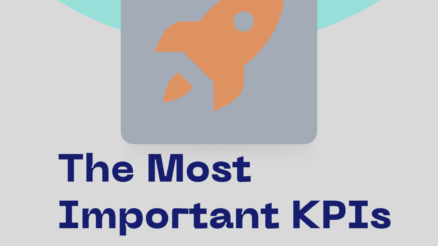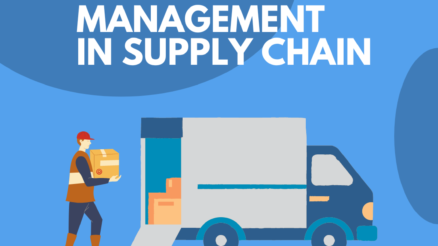Change is a natural part of an organization’s growth and development.
Every organization needs to adopt to new technology, process and business model in order to evolve and grow and stay relevant in its business.
Then, how change can be successfully executed and organizations adapt to change ?
There are change management methodologies which are effective tool to help organizations adapt and thrive in a constantly changing business environment
In this blog post, we discuss what are top 20 change management methodologies and why these are important and how these can be used in change process to ensure successful execution of change initiative.
WHAT IS CHANGE MANAGEMENT?
Change management is a systematic and strategic approach to dealing with change and managing change at organizational level.
Change management includes steps and process that lead change from its conceptualization to reaching its desired results or final outcome.
Organizational change is driven either by external or internal factors. External factors include market economy, macro-economic situation, business eco-system, government laws and business regulation etc. Many a times, organizational internal factors drive change such as change in leadership, technological advancement, profitability, customer demand etc.
Why are change management methodologies important?
Change management methodologies are important because they provide a framework and guiding principles for entire change management process. Without a proper direction and framework, it is hard to navigate through disruptive change.
Change management methodologies provide a structured approach to identify need for change, develop a plan, implement that plan, track progress and measure its results.
These methodologies help organizations to be more proactive and strategic in their approach to change, rather than reacting to change as it happens.
Change management methodologies are also important because they help change leaders to communicate more effectively about the change process. By using a common language and framework, change leaders can ensure that their team is fully involved in the change process and working towards the same goals. This ultimately helps to reduce anxiety, stress and conflictamong team and improve the chances of success for the change initiative.
20 Change Management Methodologies
Here are top 15 change management methodologies that help organizations to transform their business.
1. Bridges Transition Model
William Bridges developed a model which explains change by adopting three stages model of change management. It is often called as Bridges Transition Model.This model help organizations navigate the psychological aspects of change, including the ending of one phase, the neutral zone, and the beginning of a new phase.
- Ending Phase is about ending old ways of doing thing. It is not easy as it may cause lot of negative emotions.
- Neutral Zone is about controlling negative emotions and learning about what will be the future.
- New Beginning is about embracingchange and adopting new skills in order to fit into new realities.
Change leaders and management need to understand the emotional perspective of employees who are going through change and help them to have successful transition from one stage to another.
2. ADKAR Model
ADKAR model is one of the most popular change management methodologies. ADKAR stands for Awareness, Desire, Knowledge, Ability and Reinforcement. The model focus on individual or employee who is affected by organizational change.
It guides change leaders to first create understanding about change; the second action is to create willingness among employees to implement change; the next action is to give required knowledge about the change; the fourth action is to build skills of employees and the final action is to sustain a long lasting and impactful change.
3. Lewin’s Change Management Model
Lewin’s change management model is based on the concept that change involves three stages: unfreezing, changing, and refreezing. First stage is unfreezing which is about getting people prepared to start the journey of change. Second stage is change which talks about transition and what does it entail to experience the process of transition. Third and the last stage is freezing which is all about the stability and how change is institutionalized in the culture of an organization.
4. Burke Litwin Model of Change
This model model explains three levels of changes: transformational, transactional changes and changes in performance in an organization which are derived by 12 factors or drivers of change. These factors are: external environment, mission andstrategy,leadership, organizational culture, structure, system, management practices,working climate, task and skills,individual values and needs, motivation level, individual and organizational performance.
5. Leavitt’s Diamond Model
Leavitt developed this model which helps to understand four factors that are: structure, task, people and technology. This model is also known as Leavitt’s Diamond model and its basic concept is that if one variable of organizational change is changed it does affect other variables.
If structure gets changed then it will affect people, tasks and technology and if there are changes in human resource or employees then it will affect other factors which are structure, tasks and technology.
6. Kubler Ross Change Curve Model
Kubler Ross widely known as change curve model is based on 5 stages of grief and loss to explain emotional transitions an individual face while experiencing emotionally difficult situation.
- The first stage is shock or denial when an employee does not accepts new reality;
- The second stage of anger comes when employees reacts on what is happening;
- The third stage is called bargaining when employee wants to delay change;
- The fourth stage is depression which he surrenders and becomes extremely sad with lowest energy and productivity;
- The last stage is of acceptance when employees embrace change and find solutions to adjust in the new situation.
This change management methodology helps organizations to understand emotional reaction of their employees while experiencing change and how organizations respond to these reactions and help employees cope with changing situation.
7. Kotter’s 8 Steps Model of Change Management
Kotter’s 8 steps model is also one of most effective change management methodologies to explain acceptability of change through adopting eight steps :
First step: create urgency for change.
Second step: bring together like-minded employees to form coalition for change
Third step: create vision of change
Fourth step: communicate vision of change
Fifth step: remove obstacles
Sixth step: create short wins
Seventh step: build on small changes
Eight step: make change a part of organizational culture.
8. Iceberg Model of Change Management
Wilfried Kruger uses analogy of iceberg to explain process and dynamics of change management. This method mainly focuses on roadblocks or barriers of change and how these barriers can be removed to ensure change to take place smoothly without causing any problem.
Ice Berg Model of Change Management explains that managers usually narrowly define three factors of change and these are: cost, quality and time. These are issues which are related to organizational management. And these are the only tip of iceberg. These are only 10% of change happening in organization and 90% of change is below the iceberg.
9. Nudge Theory of Change Management
As the Nudge theory is about indirectly influence individuals without taking freedom of choice. It discourages any change in behaviour of employees by giving them strict orders and directions. Nudge Theory of Change is about giving choices and providing enabling environment and support that would lead to change in their behaviour which lead to long-lasting change. It is not an easy process and it takes time to influence their behaviour towards change. This process starts with analysing the current behaviour of employees and what are the desired changes in their behaviour and then development of supporting environment that influence their behaviour.
10. McKinsey 7S model
This change management methodology is developed by McKinsey which is a renowned management consulting firm. In this method, the 7S refers to the seven factors that start with the letter ‘S’ namely strategy, structure, system, shared values, skills, style and staff. These factors determine how is organization designed and how does its different parts of organization work together to implement change in that organization.
11. The Diffusion of Innovation
This model explains how new ideas and practices spread through an organization. Diffusion of Innovation explains how an innovative idea or technology is spread and adopted and what are factors which influence this adaptation. Diffusion is the process by which an innovation is communicated through certain channels over time among the members of a social system. So, it has four elements: innovation, communication channels, time and social system.
12. Action Research
Action research is a method of inquiry that is used to identify and solve organizational problems. It involves identifying problem or issue that needs to be addressed. This is done by gathering data and information about the problem. The next step is acting calls for taking action to address problem and involve implementing change such as adopting new policy, process or technology. The next step is observing that is all about collecting feedback from employees and stakeholder on adopted change. The last step is reflecting that is about analysing results and learning from the results to make improvements in change interventions.
13. Capability Maturity Model
Capability Maturity Model (CMM) is a framework for evaluating an organization’s readiness for change and for guiding the implementation of new processes and practices. It is based on the concept that organizations go through five levels of maturity when it comes to managing change:
- Initial (Level 1): At this level, change management is ad hoc and reactive, with no formal processes in place.
- Repeatable (Level 2): At this level, change management processes are established and documented, but they are not consistently followed.
- Defined (Level 3): At this level, change management processes are standardized and consistently followed across the organization.
- Managed (Level 4): At this level, change management processes are actively monitored and measured for effectiveness.
- Optimizing (Level 5): At this level, change management processes are continuously improved through the use of data and analytics.
14. Three Horizons of Growth Model
Three Horizons of Growth Model is method used in change management to plan and manage change. The concept is thatorganizations can be divided into three horizons: the current state (Horizon 1), the near-term future (Horizon 2), and the long-term future (Horizon 3).
Horizon 1 represents the core business of the organization, and includes the products, services, and processes that are currently driving the majority of the organization’s revenue and profits. Horizon 2 represents emerging opportunities and challenges that are likely to impact the organization in the next 3-5 years. These may include new technologies, market trends, or changes in customer needs. Horizon 3 represents longer-term opportunities and challenges that are more uncertain and may take 5-10 years or more to materialize.
Using this method organizations can balance short-term and long-term priorities and identify or invest in opportunities that will drive future growth.
15. Satir Change Model
This method is used to understand 05 stages of change that individuals and organizations go through. These five stages are:
- Status quo: This is the starting point, where organizations are comfortable and resistant to change.
- Chaos: This stage is characterized by confusion and uncertainty as organizations begin to let go of the old way of doing things and starts to find new possibilities and opportunities.
- Integration: This stage is marked by the beginning of new patterns and behaviors as organizations start to integrate the changes in their process.
- Practicing: This stage is characterized by the refinement of new behaviors and process and development of new skills.
- Consolidation: In this final stage, the changes become fully integrated into organizations identity and way of functioning.
16. Competing Values Framework
The Competing Values Framework is used for understanding and managing organizational culture. It is based on the idea that different types of organizational cultures can be characterized by four values:
- Clan culture: This type of culture is characterized by a strong sense of community and collaboration.
- Adhocracy culture: This type of culture is marked by a high degree of flexibility and adaptability.
- Market culture: This type of culture is characterized by a focus on competition and performance.
- Hierarchy culture: This type of culture is marked by a strong emphasis on control and stability.
17. The Force Field Analysis
It is simple but practical methodology of change management. Force Field Analysis is about identifying and analying different factors which are influencing a change initiative. There are multiple forces which are working in favour of change and against change. These forces are not physical but actually these are influences and circumstances that are driving or rejecting the change idea.
If an organization maintains equilibrium by balancing both forces, then there is no change happened. Change happens only when equilibrium is disrupted. It means that an organization needs to over come the opposing forces by strengthening the driving forces.
18. Theory of Constraints
The Theory of Constraints (TOC) is one of effective change management methodologies that is based on the idea that organizations are limited by certain constraints that can prevent them from achieving their change goals. These constraints can be internal (e.g., processes, systems, policies) or external (e.g., markets, competition, regulations). There are five steps to identify and manage these constraints.
- Identify the constraint: The first step is to identify the key constraint that is limiting the organization’s ability to achieve its change goals.
- Exploit the constraint: The second step is to focus resources and efforts on maximizing the capacity of the constraint.
- Subordinate everything else to the constraint: The third step is to align all other processes and activities with the constraint, so that they do not interfere with its operation.
- Assess the constraint: The fourth step is to identify ways to improve or remove the constraint, such as through investment, training, or process improvement.
- If the constraint has been broken, go back to step one: The final step is to repeat the process, as new constraints may emerge as the organization evolves.
19. PDCA Cycle
The PDCA cycle is a valuable method for change management because it provides a structured approach for identifying problems or opportunities, developing and implementing plans to address them. The PDCA cycle consists of four steps:
- Plan: The first step is to identify the problem or opportunity that needs to be addressed, and to develop a plan for addressing it. This may involve gathering data and analyzing the current situation.
- Do: The second step is to implement the plan and take action to address the problem or opportunity.
- Check: The third step is to gather data and feedback to evaluate the results of the action taken.
- Act: The final step is to reflect on the results of the action taken, and to determine what changes should be made to the plan based on the feedback and data collected. This may involve making adjustments to the plan, or starting the cycle again with a new problem or opportunity.
20. Lean Change Management Model
This method is based on the principles of lean manufacturing and is designed to help organizations implement changes in a more agile and efficient way. It focuses on identifying and addressing the root causes of problems, and on continuously improving processes and practices. The model includes five steps: define the problem, develop a hypothesis, test the hypothesis, implement the solution, and reflect on the results. The Lean Change Management Model is particularly useful for organizations that are looking to adopt a more agile and responsive approach to change management.
Final Words
There are many different change management methodologies that organizations can use to guide their efforts to implement and manage change. These methodologies offer a range of approaches and frameworks for knowing their change, understanding its reasons and needs and navigating the complexities of change. Some, like Kotter’s 8-Step Change Model and Lewin’s Change Management Model, focus on the process of change itself, while others, like the ADKAR Model and the Change Curve, focus on the psychological aspects of change. Still others, like the McKinsey 7-S Model and the Three Horizons of Growth Model, take a more holistic view of organizational change. Selection of the right change management methodology will depend on the specific organizational needs and goals and on the nature and scope of the change being implemented.



